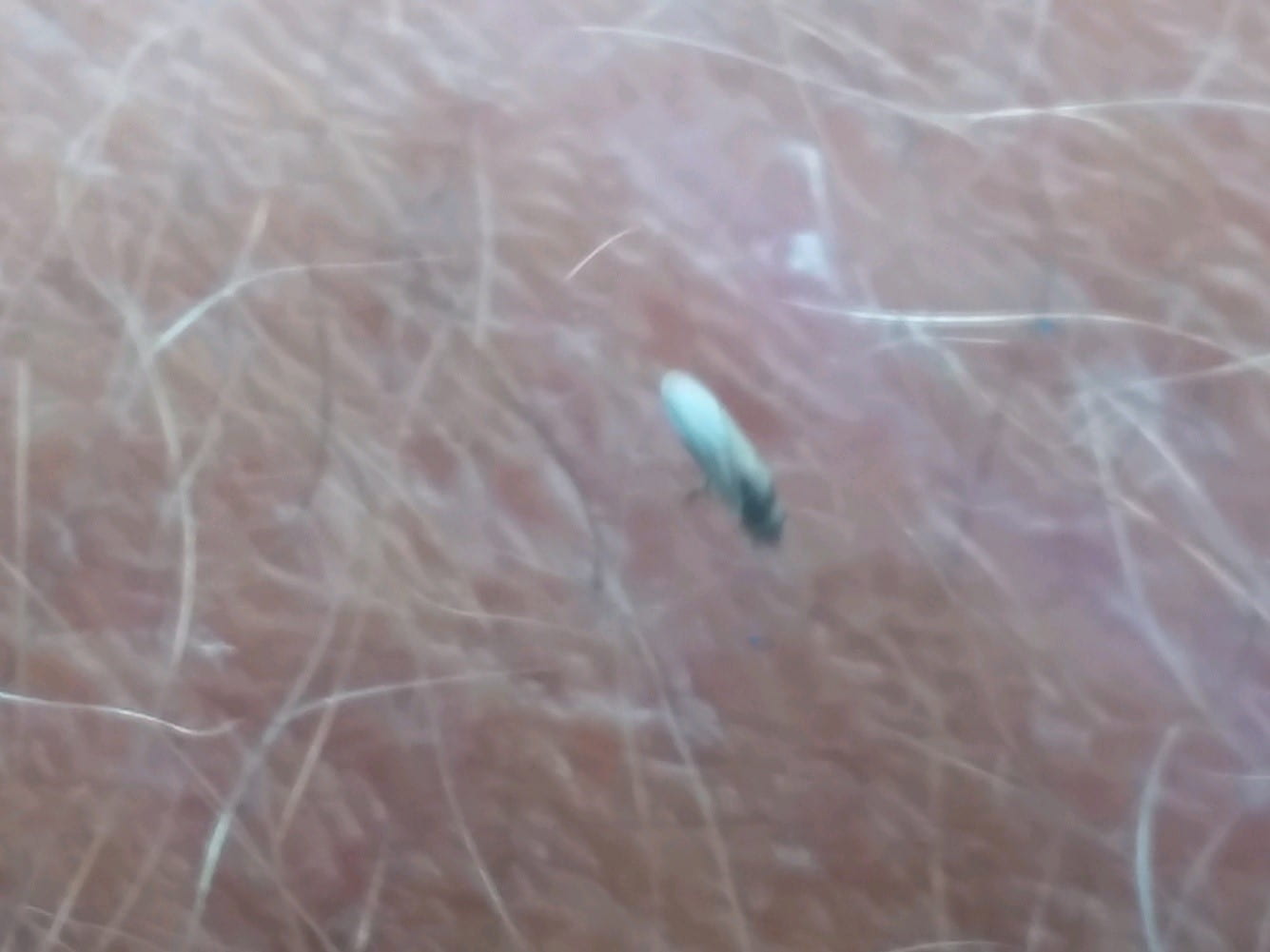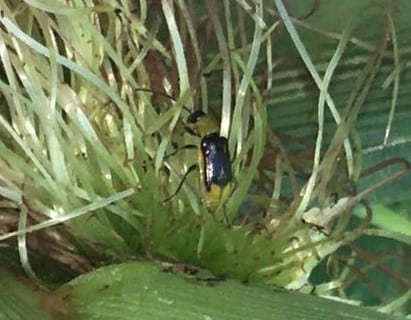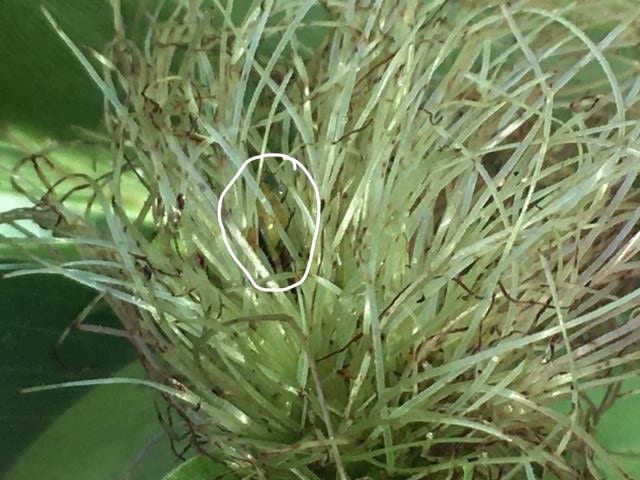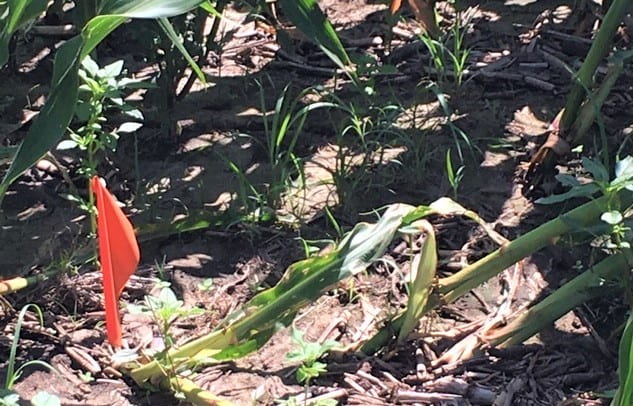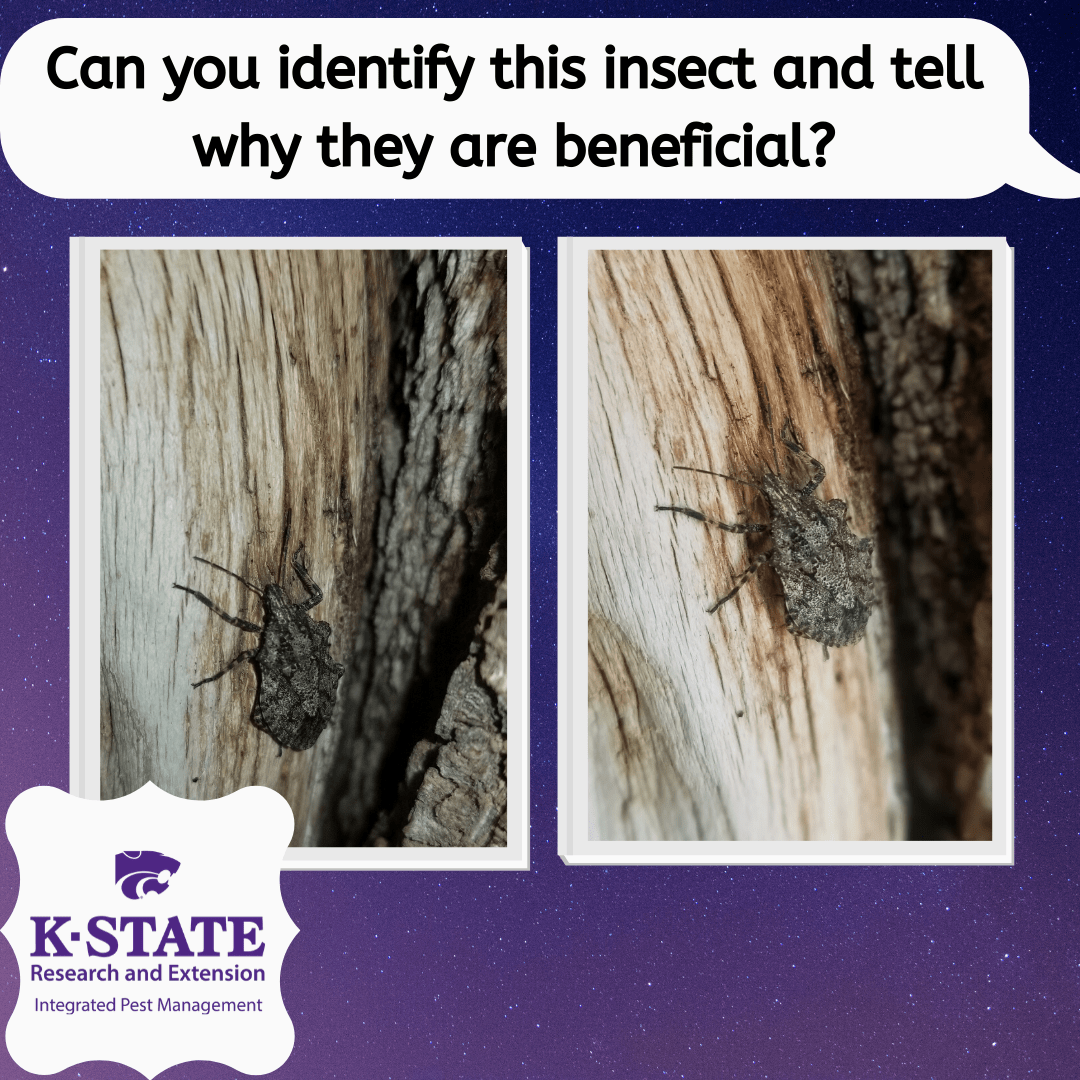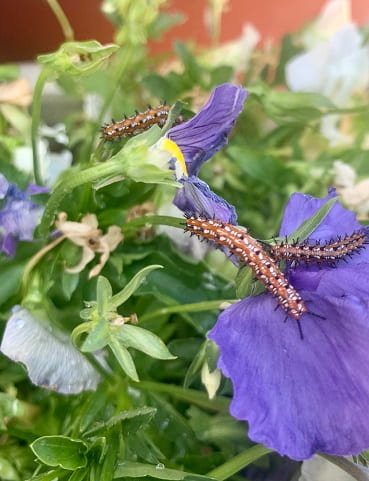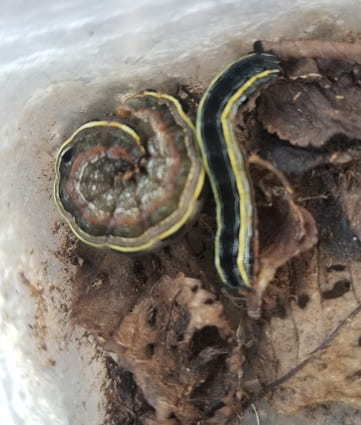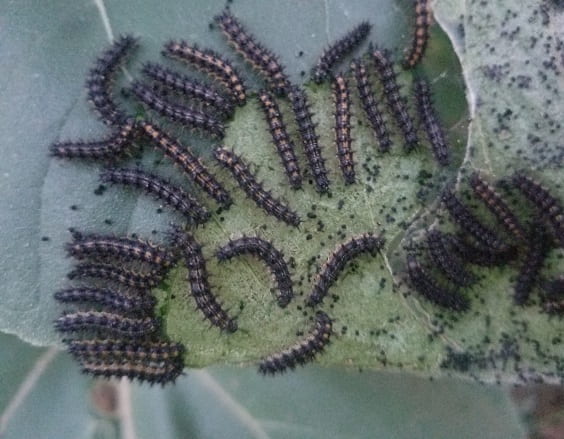–by Dr. Raymond Cloyd
Squash vine borer, Melitta curcurbitae, feeds on squash, pumpkin, cucumber, and muskmelon. At this time of year, larvae are feeding inside plants. Adults are moths that are 5/8 inches long, orange-red, with gray bands and three to four black markings along with orange-red hairs on the abdomen (Figure 1).

Figure 1. Squash Vine Borer Adult
). Adults are active during the day with females depositing eggs on the stem near the soil level or on stems or petioles when plants begin to flower. The eggs are red-brown, flattened, 1/30 inches in diameter, and are located at the base of plants (Figure 2).
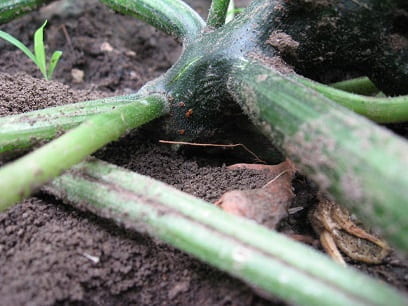
Figure 2. Squash Vine Borer Eggs At Base Of Plant
A single female can lay up to 200 eggs during her lifetime. Larvae that emerge (eclose) from eggs are white, with a dark head capsule. Young larvae are 1/4 to 3/4 inches in length and taper toward the end of the abdomen. Mature or fully-grown larvae are 1 to 1-1/2 inches long (Figure 3).

Figure 3. Mature Squash Vine Borer Larva (Raymond Cloyd, KS)
Larvae that emerge (eclose) from eggs immediately tunnel into the base of plants; feeding for 30 days in the plant stem. The larvae increase in size as they mature. There is usually only one larva per stem; however, multiple larvae may be present in a single stem. In fact, one year we found seven larvae in one stem (it was awesome J). Mature larvae emerge from plant stems and burrow into the soil. The larvae construct brown, silken cocoons where they overwinter. Squash vine borer overwinters as a mature larva in the cocoon located 1.0 to 2.0 inches deep in the soil. In early spring, adults emerge from the soil. Squash vine borer has one generation in Kansas.
During this time of year, squash vine borer larvae are feeding within the internal vascular tissues, which inhibits the plant’s ability to take-up water and nutrients. Consequently, larval feeding causes the sudden wilting of vines and plant collapse (Figure 4).

Figure 4. Plant Wilting Due To Feeding By Squash Vine Borer Larvae (Raymond Cloyd, KSU)
Once the larvae are inside the plant, not much can be done to manage squash vine borer and prevent damage. The tunnels inside infested plants are filled with moistened frass (fecal matter) (Figure 5).

Figure 5. Frass Associated With Squash Vine Borer Larva In Plant Stem (Raymond Cloyd, KSU)
Yellow-green sawdust-like frass can also be found around feeding sites at the base of vines or plants, which will be a direct indication that larvae have entered the plant.
Since the larvae are feeding inside the plant there is not much that can be done to kill the larvae; however, there are plant protection strategies that can be implemented during the remainder of the growing season such as; sanitation and physical control.
Sanitation: remove and dispose of all wilted plants before the larvae leave and enter the soil. Discard all plant debris such as vines and fruits after harvest.
Physical control: rototilling in fall will directly kill squash vine borer pupae or bring the pupae to the soil surface where they are exposed to cold weather or predation by birds. In addition, the process of deep plowing will bury the pupae deeper in the soil profile, which may inhibit adult emergence from the soil. Another technique that may have limited use in large plantings but may be feasible for smaller plantings is to locate infested stems and vines, and create slits at the base of the plant. Tweezers can then be used to remove larvae from inside the plant. Larvae should be killed and the plant base covered with moist soil and mulch, which will stimulate the production of secondary vines and/or root growth; thus helping the plant to re-establish.
For more information on how to manage the squash vine borer, refer to the following extension publication:
Squash Vine Borer (MF3309 July 2016)
http://www.bookstore.ksre.ksu.edu/pubs/MF3309.pdf

